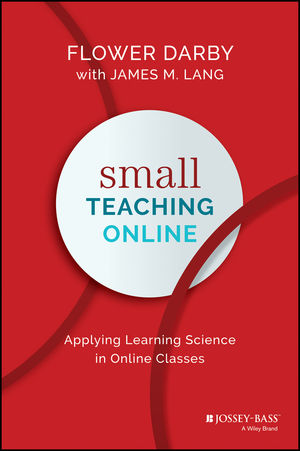Activism Common Assessmentmr. Becker's Classroom
What Are CATs?
Formative assessment might look like students giving each other feedback in pairs or small groups, a classroom discussion, student self-assessment or a quick quiz or poll. And at its best, formative assessment becomes an integral part of a teaching and learning cycle that helps both students and teachers grow. Here you will find the unit materials and supplementary materials for success in class. This may include assignments, multimedia activities, and additional support materials.
Classroom Assessment Techniques (CATs) are generally simple, non-graded, anonymous, in-class activities designed to give you and your students useful feedback on the teaching-learning process as it is happening.
Examples of CATs include the following.
Activism Common Assessmentmr. Becker's Classroom Assessment
- The Background Knowledge Probe is a short, simple questionnaire given to students at the start of a course, or before the introduction of a new unit, lesson or topic. It is designed to uncover students’ pre-conceptions.
- The Minute Paper tests how students are gaining knowledge, or not. The instructor ends class by asking students to write a brief response to the following questions: “What was the most important thing you learned during this class?” and “What important question remains unanswered?”
- The Muddiest Point is one of the simplest CATs to help assess where students are having difficulties. The technique consists of asking students to jot down a quick response to one question: “What was the muddiest point in [the lecture, discussion, homework assignment, film, etc.]?” The term “muddiest” means “most unclear” or “most confusing.”
- The What’s the Principle? CAT is useful in courses requiring problem-solving. After students figure out what type of problem they are dealing with, they often must decide what principle(s) to apply in order to solve the problem. This CAT provides students with a few problems and asks them to state the principle that best applies to each problem.
- Defining Features Matrix: Prepare a handout with a matrix of three columns and several rows. At the top of the first two columns, list two distinct concepts that have potentially confusing similarities (e.g. hurricanes vs. tornados, Picasso vs. Matisse). In the third column, list the important characteristics of both concepts in no particular order. Give your students the handout and have them use the matrix to identify which characteristics belong to each of the two concepts. Collect their responses, and you’ll quickly find out which characteristics are giving your students the most trouble.

Why Should I Use CATs?

CATs can be used to improve the teaching and learning that occurs in a class. More frequent use of CATs can…
- Provide just-in-time feedback about the teaching-learning process
- Provide information about student learning with less work than traditional assignments (tests, papers, etc.)
- Encourage the view that teaching is an ongoing process of inquiry, experimentation, and reflection
- Help students become better monitors of their own learning
- Help students feel less anonymous, even in large courses
- Provide concrete evidence that the instructor cares about learning
How Should I Use CATs?
Activism Common Assessmentmr. Becker's Classroom
Results from CATs can guide teachers in fine-tuning their teaching strategies to better meet student needs. A good strategy for using CATs is the following.
- Decide what you want to assess about your students’ learning from a CAT.
- Choose a CAT that provides this feedback, is consistent with your teaching style, and can be implemented easily in your class.
- Explain the purpose of the activity to students, and then conduct it.
- After class, review the results, determine what they tell you about your students’ learning, and decide what changes to make, if any.
- Let your students know what you learned from the CAT and how you will use this information.

Where Can I Find More CATs?

Activism Common Assessmentmr. Becker's Classroom Resources
The standard references on CATs is Classroom Assessment Techniques: A Handbook for College Teachers, 2nd edition, by Thomas A. Angelo and K. Patricia Cross (Jossey-Bass, 1993). This book includes 50 CATs, indexed in a variety of useful ways. The book is available at the Center for Teaching library. Yahoo questions. See its ACORN record for call number and availability.
Activism Common Assessmentmr. Becker's Classroom Activities
A number of web sites also feature information on and examples of CATs, including the following.
UNBLOCKED EVRYTHING. Home Games Miscellaneous Fun Stuff Contact Us Comments New Page test Powered by Create your own unique website with customizable templates. Home Games Miscellaneous Fun Stuff Contact Us Comments New Page test.  UNBLOCKED EVRYTHING. Home Paladin Game Passwords RUNAWAY Duck Life Games 2048 Games Mineblocks Don't Shoot the Puppy Mariocart Tank Trouble Avalanche Flying Steel Revenge Of The Stick Pole Position Drag Racer 3 Fancy Pants American Racing Crunchball 3000 Robot Unicorn Attack.
UNBLOCKED EVRYTHING. Home Paladin Game Passwords RUNAWAY Duck Life Games 2048 Games Mineblocks Don't Shoot the Puppy Mariocart Tank Trouble Avalanche Flying Steel Revenge Of The Stick Pole Position Drag Racer 3 Fancy Pants American Racing Crunchball 3000 Robot Unicorn Attack.
- Examples of CATs from George Washington University
- More Examples of CATs from Iowa State University.
- CATs for Science, Technology, Engineering, and Math from the Field-Tested Learning Assessment Guide
This teaching guide is licensed under a Creative Commons Attribution-NonCommercial 4.0 International License.
